If you have a small living room, you know how challenging it can be to arrange the furniture in a way that looks and feels open and inviting.
With some creative thinking and smart furniture choices, even the tiniest living room can be transformed into a stylish, functional space for relaxing and entertaining.
So let’s get started transforming your small living room into a welcoming oasis you’ll be proud to show off:
✨Click to Get My 101 FREE Designer Room Ideas
Float Your Furniture
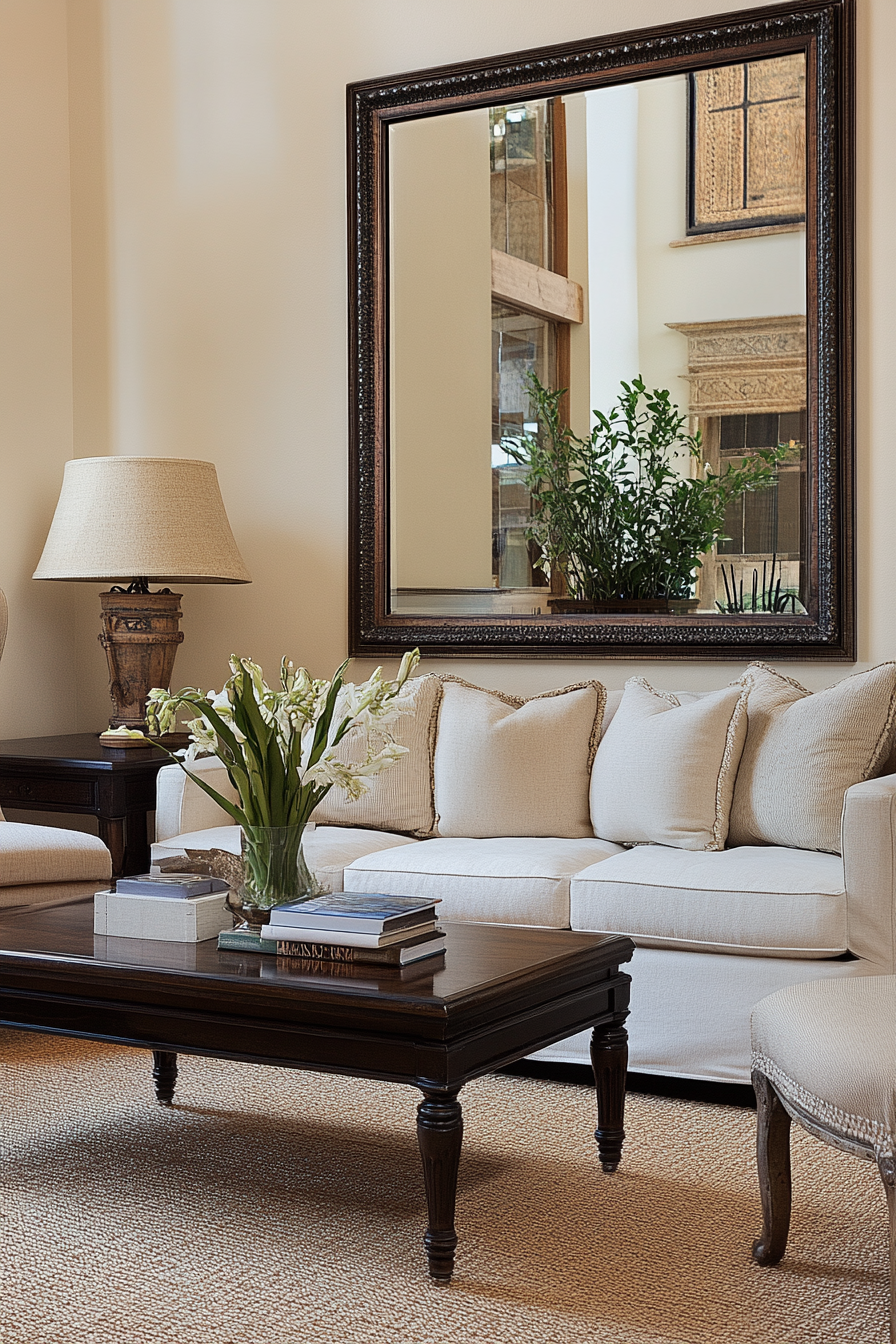
One of the best tricks for opening up a small living room is to float the furniture away from the walls.
Pushing pieces like sofas, chairs, and tables away from the perimeter gives the illusion of a larger space.
Aim to float furniture at least 12-18 inches from the walls.
If traffic flow is an issue, try floating only one or two pieces like a sofa or chair.
Just be sure to leave enough space for walking around.
Floating furniture also makes your living room feel airier and less congested.
Try placing a console table behind your sofa, floating a small chair next to an end table, or putting an accent table in the middle of the room.
Leave breathing room around each piece so things don’t feel crowded.
Floating just a few key items can make all the difference in a small space.
Limit Large Furniture
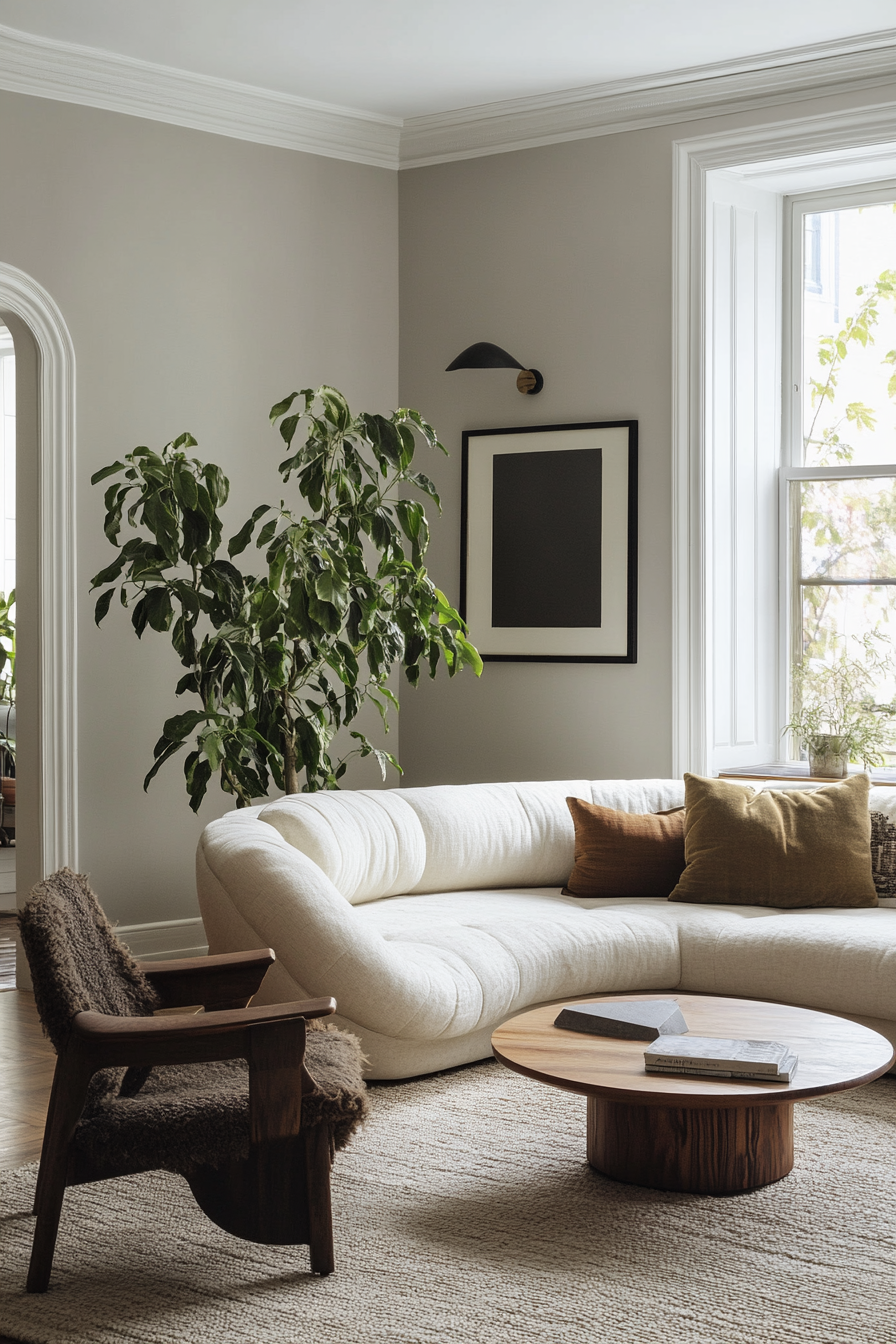
When working with a small living room, resist the temptation to cram in oversized furnishings.
Large bulky pieces like sectionals and massive coffee tables will overwhelm the space.
Stick to furnishings scaled to fit your room’s proportions.
A standard loveseat is usually a better choice than an overstuffed sofa.
Round cocktail tables take up less visual space than rectangular ones.
You get the idea.
That said, don’t sacrifice comfort for size.
Look for compact furniture designed for small spaces.
Many retailers offer apartment-sized sofas, chairs, and tables now.
You can find great options that are thoughtfully scaled down without sacrificing style.
Limit yourself to one or two larger statement pieces at most.
Then mix in some smaller-scale accent chairs, end tables, consoles, etc.
The variety of sizes helps keep the room balanced.
Don’t be afraid to edit down and remove extra furnishings if the space starts feeling crowded.
Use Multifunctional Furniture
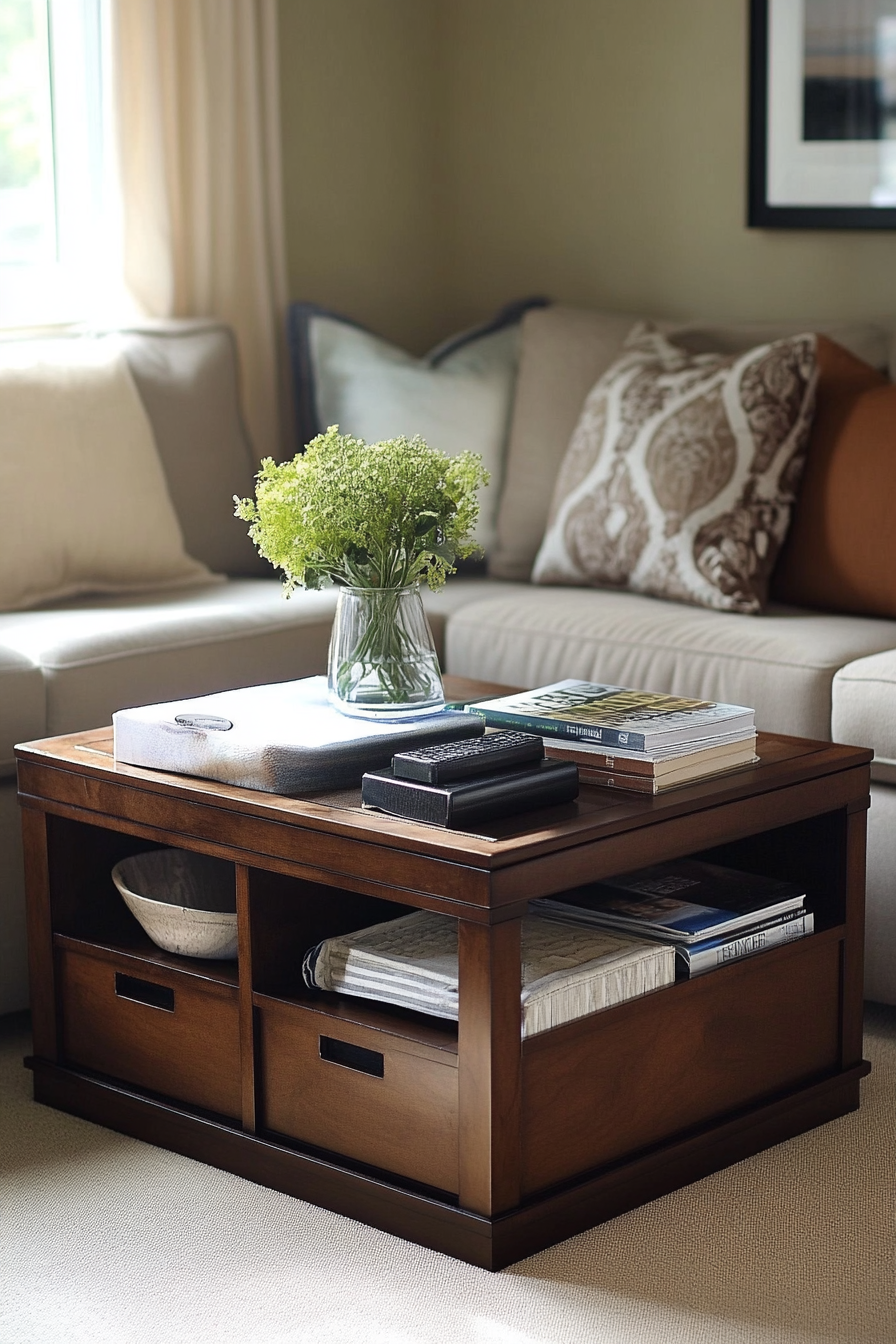
One of the secrets to furniture placement in a small living room is choosing versatile, multifunctional pieces.
Items like ottomans with built-in storage, coffee tables with lift-tops, and nesting side tables are all great options.
Look for furniture that serves more than one purpose, especially if you need to accommodate guests.
An ottoman can provide extra seating and stash blankets when not in use.
Nesting tables offer side table surface space, but can be stored when you need more room to move around.
There are also sofas and chairs that include storage space like pull-out drawers under the cushions.
Be creative and think about how each piece can work double duty for your needs.
The more functionality, the better!
Create Conversational Zones

Don’t think your small living room has to be one static seating arrangement.
Create intimate conversational zones throughout the space to give it more personality.
For example, float two chairs facing each other next to the fireplace to form one area.
Then arrange a small sofa and accent chair around a coffee table in the opposite corner.
Having a few different vignettes makes the room more inviting, and keeps the focus off any tight quarters.
Mixing up seating heights and styles also adds nice variety.
You can have one area with modern low chairs, and another with more traditional armchairs.
Section off zones using area rugs in different sizes too.
Just be sure each space has room to walk around.
Creating zones prevent your living room from feeling like one cramped area.
✨Click to Get My 101 FREE Designer Room Ideas
Go Light and Airy

The smaller the room, the lighter it should feel.
Incorporate airy, open elements whenever possible.
Some easy ways to create a light and airy vibe include:
– Float sheer curtains from ceiling to floor to maximize vertical space
– Use glass coffee and side tables to see through surfaces
– Choose open metal or wicker chairs instead of bulky upholstered ones
– Display decorative accents like wire sculpture or greenery
– Paint walls in soft neutral or cool pastel colors
– Add mirrors and reflective surfaces to expand the space
The goal is to give your living room a spacious ambiance.
Minimize heaviness and opacity wherever you can.
Bright, see-through decor makes the room feel more expanded.
Keep things light and breezy for an instantly airier space!
Position Furniture at Angles

Who says all the seating in your small living room has to line up squarely with the walls?
Get creative with the layout by placing furniture at slight angles.
For starters, put your rug at a 45-degree angle.
Then arrange your sofa and chairs around it following the same direction.
Angling the furniture makes the space dynamic and draws the eye around each piece.
You can also angle furniture to maximize flow and walking paths.
Positioning your sofa on a diagonal opening up access to doorways keeps the room functional.
Just be sure to allow enough clearance for opening doors and drawers.
Don’t be afraid to think outside the box and ignore strictly perpendicular arrangements.
The angled layout technique can make your living room layout feel more open and contemporary.
Incorporate Visual Lightness
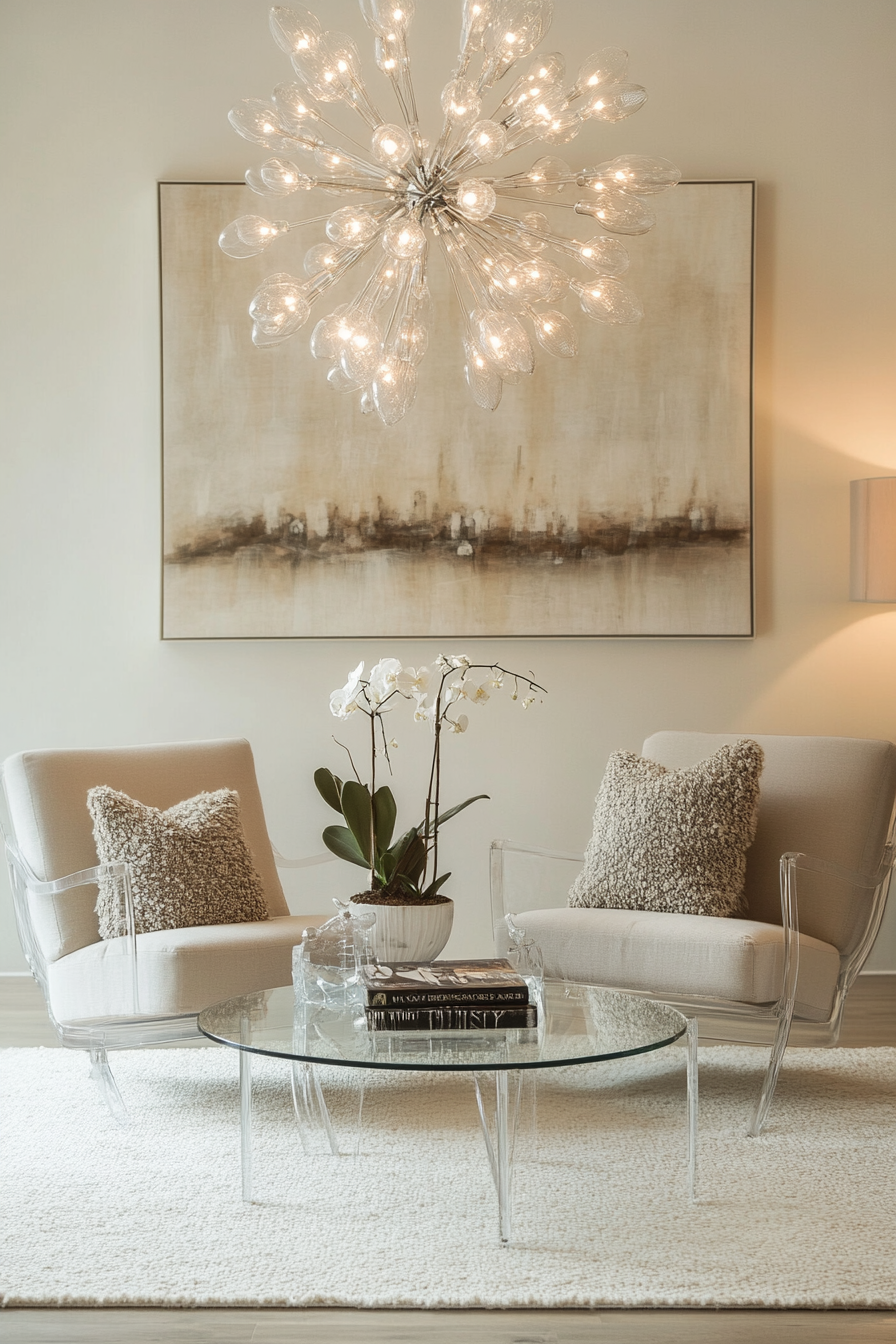
Beyond lighting and color, there are plenty of ways to add visual lightness through furnishings.
Clear acrylic chairs, glass coffee tables, and lucite accent pieces make a room feel airy and less cramped.
The more you can see through furnishings, the lighter the vibe.
For seating, acrylic chairs are a great small space option.
The transparent plexiglass doesn’t block views and prevents a heavy look.
Lucite tables also help maintain an open sightline across the room.
Don’t be afraid to mix in some acrylic, lucite, or glass pieces to offset wood and upholstered items.
The transparency balances out more substantial furnishings.
Just be careful not to go overboard or your living room may start to feel sterile.
Aim for just a few strategically placed clear pieces.
Try Mismatched Furniture
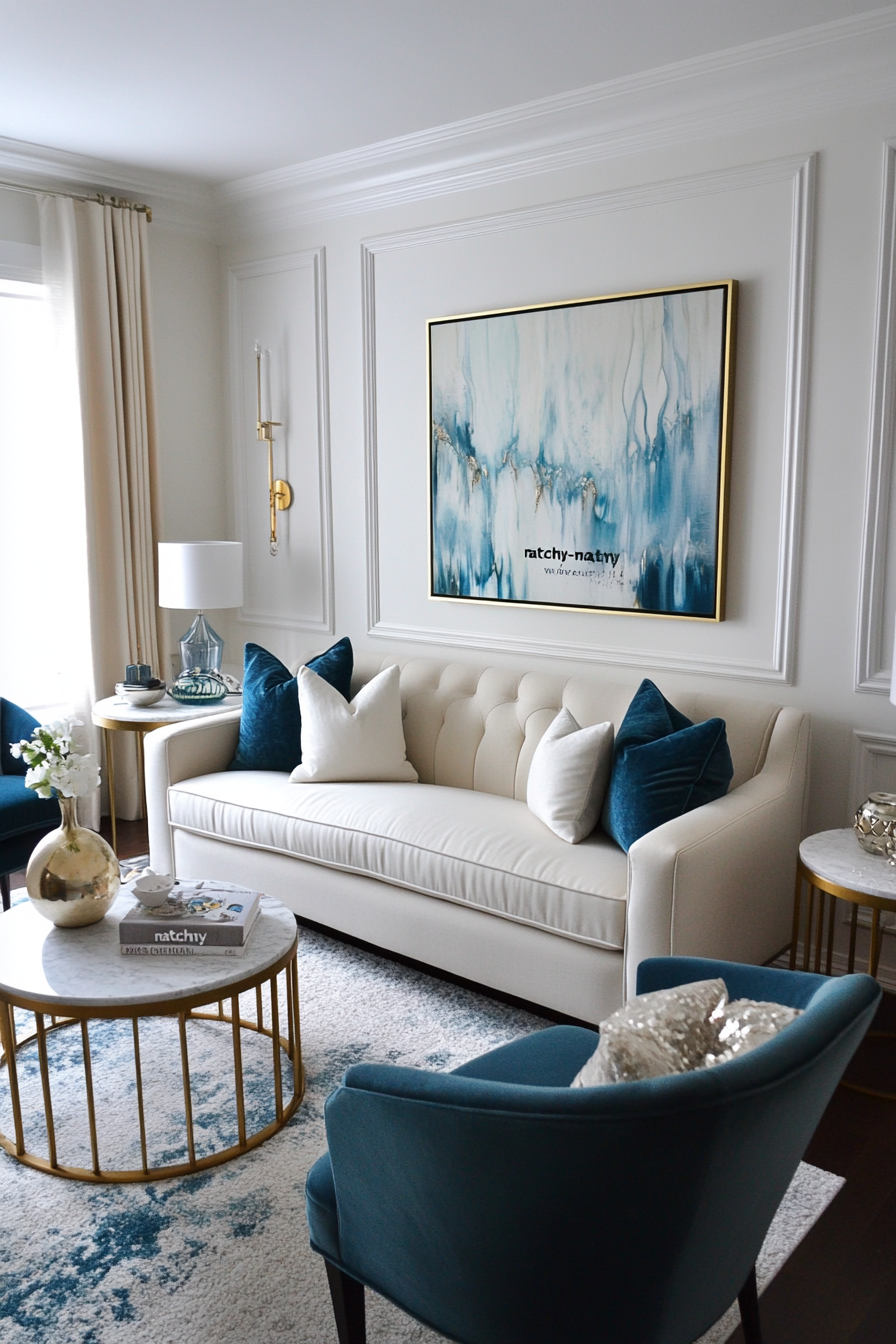
Here’s an unconventional strategy if you feel your living room layout isn’t coming together: mismatch your furniture intentionally.
Hear me out!
Blending furniture pieces of different styles and periods prevents that “matchy-matchy” showroom feel.
An eclectic mix looks curated and collected over time, giving a small space more character.
Start with your main seating like a sofa or sectional.
Choose two accent chairs in contrasting styles, like a molded plastic chair with metal legs and a button-tufted velvet chair.
Add side tables that are different heights and finish, like a marble-topped brass table next to a concrete and wood one.
Continue mixing finishes, colors and styles throughout the roo
Vary artwork frames and decorative objects too.
The overall look should feel personal and a little quirky.
Don’t be afraid to go bold!
✨Click to Get My 101 FREE Designer Room Ideas
Divide With a Console

Here’s an easy living room layout trick: use a narrow console or sofa table to divide the space.
Positioning a console behind your couch splits off a private entry area.
Or place one along another wall to carve out two seating zones.
Make sure to leave enough walking room on either side.
A console that’s 30-36 inches wide with some clear space is usually comfortable.
Try this technique if you have an awkward wall or corridor you want to integrate into the living room.
The console creates separation without a permanent barrier.
Style the console top with decor like books, clusters of frames or candlesticks.
Drape an area rug on one side to further define the space.
The divided layout makes a small living room design feel more intuitive.
Add Architectural Interest
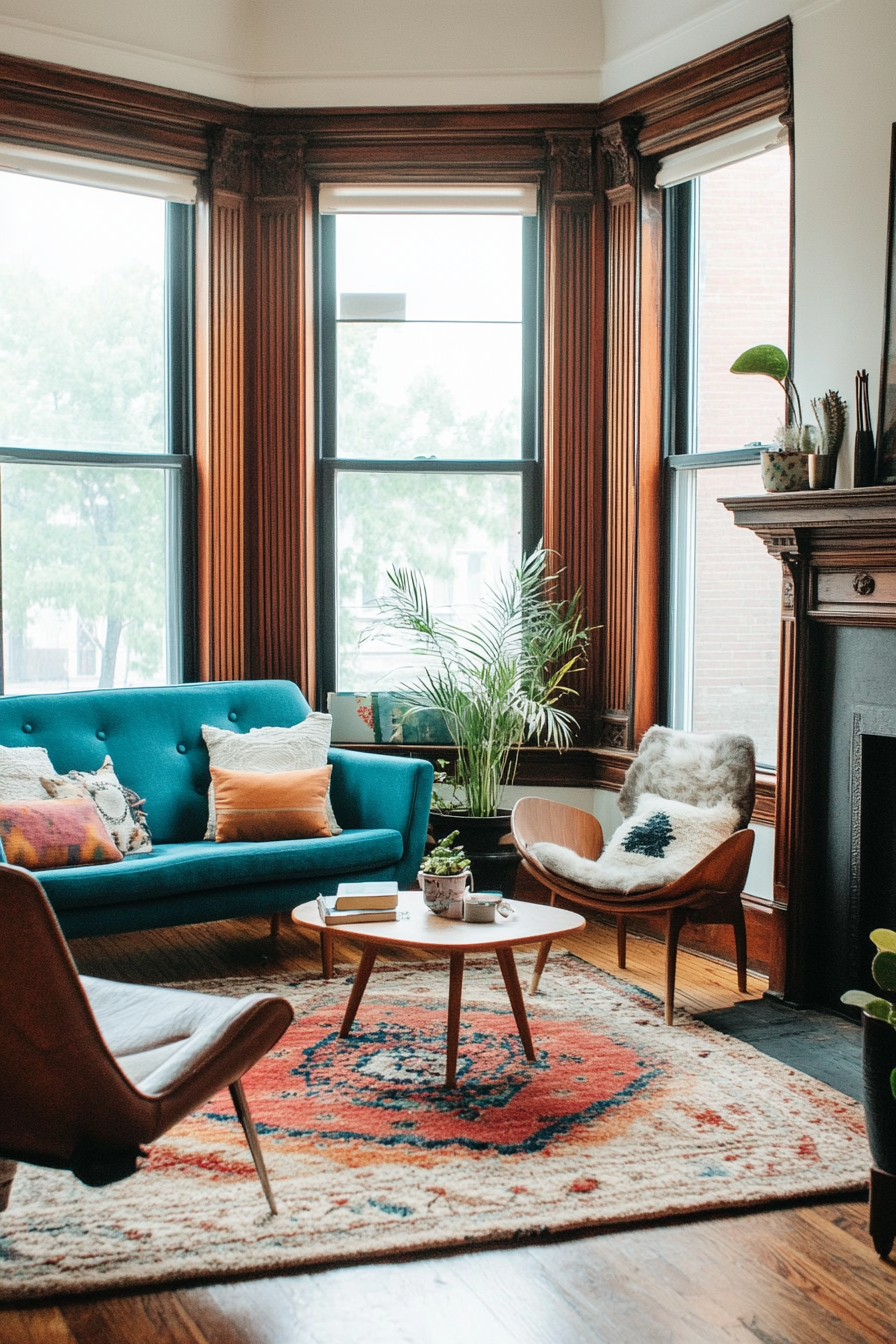
Don’t overlook the existing architecture in your small living room.
Features like the fireplace, bay window or wood beams offer great design potential.
Use these elements as a focal point to build your layout around.
If your living room has a fireplace, pull in chairs or a sofa to create a cozy seating area.
Float furniture facing the bay window to highlight the views and natural light.
Orient seats and tables under beautiful beams.
Any architectural details can inspire your layout.
Play up the most interesting aspect of your room and make it a decorative feature.
This gives your small space automatic character that transcends the square footage.
Separate With Bookcases

Here’s another room-divider trick for small living rooms: use bookcases or shelving units to create separate activity areas.
Position taller bookshelves perpendicular to the walls to act as room screens.
Place two back-to-back in the center of the room to divide seating groups.
Or line them along one wall to carve out a reading nook with chairs.
Make sure to leave enough walking space between shelves and furnishings.
You want the layout to flow nicely even with divide in place.
In addition to books, use shelves to display photos, art, greenery and accessories.
This adds color and interest while breaking up the room.
Just be cautious about making the shelves too cluttered, which defeats the purpose visually.
Maximize Wall Space

Wall space is valuable real estate in a small living room.
Be creative about utilizing vertical surfaces for both storage and style.
Floor-to-ceiling shelving lets you stash items while displaying decor.
Hang a wall-mounted cabinet for concealed storage up top.
Use the mantel over your fireplace to exhibit art and objects.
Consider mounting your TV and covering cords with wall channels.
This opens up valuable tabletop and floor space.
The same goes for wall sconces or track lighting – install it if you can.
Built-in shelving is ideal, but cabinetry and wall-mounted furniture work too.
Get everything possible off the floor and maximize what wall space you have.
This instantly makes the living room feel more expansive.
✨Click to Get My 101 FREE Designer Room Ideas
Add Reflective Surfaces
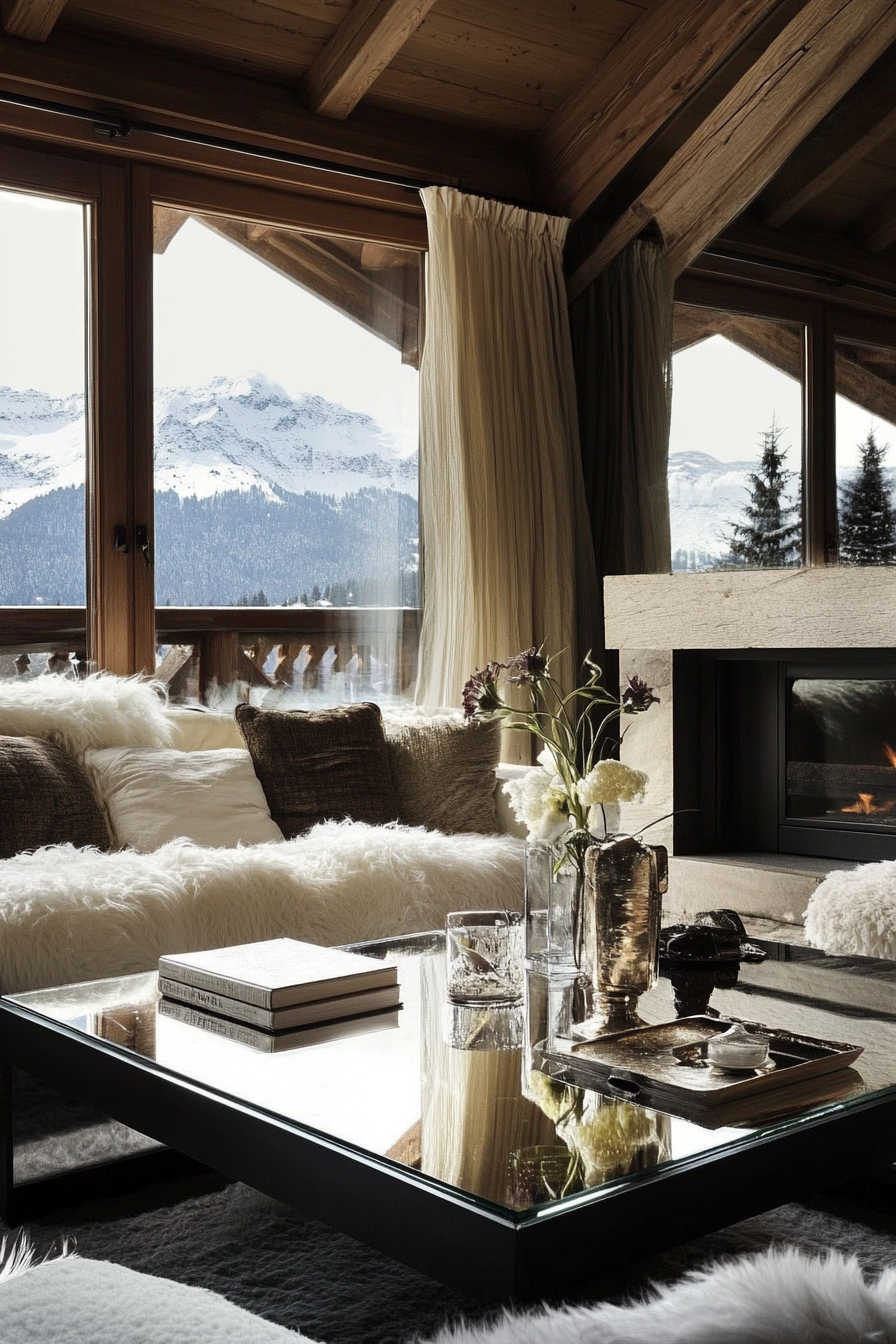
Here’s one last trick for making a small living room feel more spacious: add mirrors and reflective surfaces!
Mirrors visually double the space, while glossy coffee tables and metal accents lend light.
I like to hang a large mirror above the fireplace or a console table to expand the view.
Position it across from a window so it captures and reflects the natural light.
For small living rooms, opt for one oversized mirror, rather than a bunch of tiny ones.
Glass-topped nesting tables also provide a nice reflective surface without visual bulk.
Metallic finishes like brass, chrome or silver serve the same purpose.
Just sprinkle in reflective accents sparingly to enlarge the feel of your room.
A little glimmer goes a long way!
I hope you feel motivated to transform your small living room into a stylish, inviting oasis after reading these tips!
Remember, even the tiniest spaces can be customized to your needs with the right layout and multipurpose furnishings.
Start sketching some floor plan ideas and incorporate a few of these small living room tips that appeal to you.
Don’t be afraid to float furniture, experiment with angles and divide the space creatively.
Focus on light, airy pieces to maximize openness.
It’s amazing what a few simple tweaks can do for small living room style and comfort.
Your small living room has so much potential.
Have fun unleashing it!

